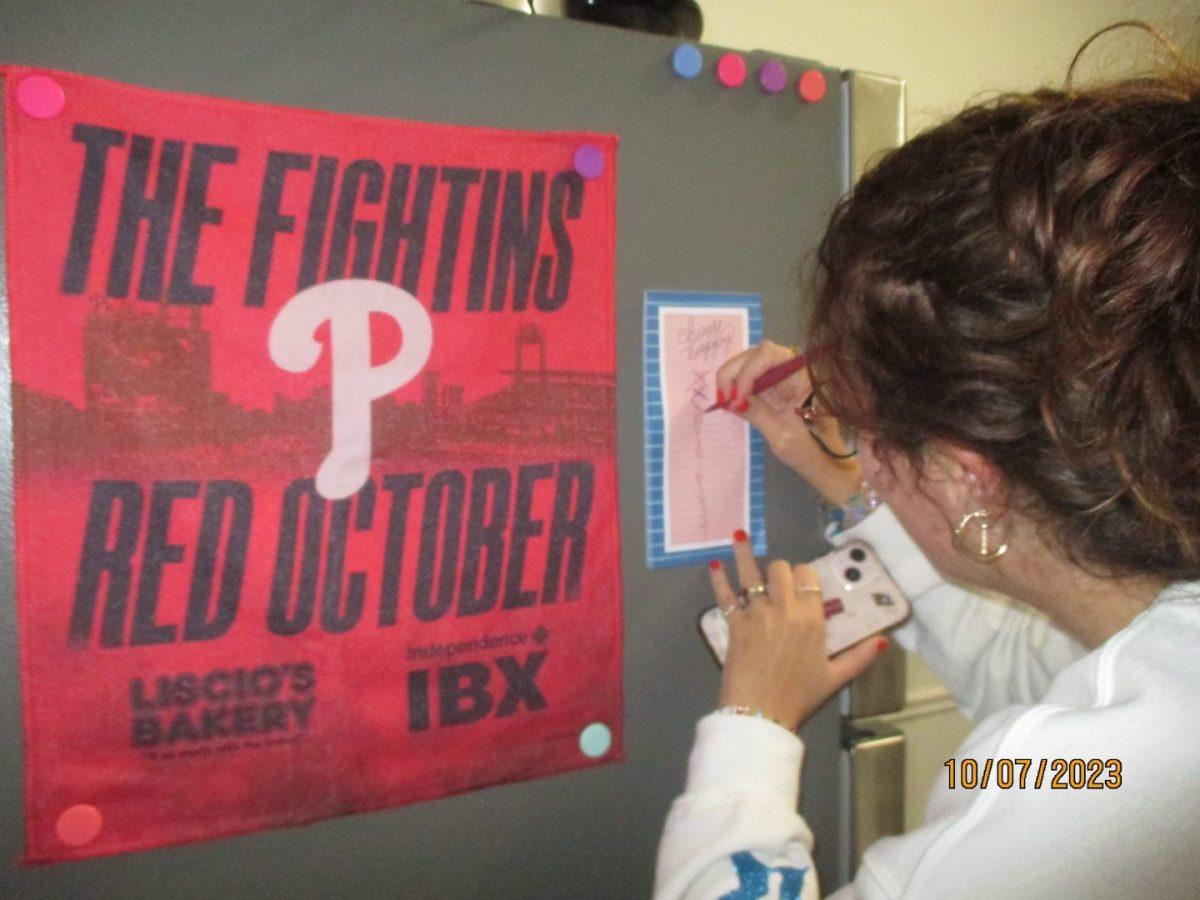Bridget Quinn, author of “She Votes: How U.S. Women Won Suffrage and What Happened Next,” held a virtual discussion open to St. Joe’s students, faculty, and staff on Sept. 17 about the women’s suffrage movement.
Quinn displayed suffragists’ art over Zoom. Quinn said art is an ideal way to understand every major social, biographical, political and economic event of a generation. She includes pieces of art throughout her book.
Quinn’s book features 100 women artists throughout history that were part of the women’s suffrage movement. Examples ranged from Elizabeth Cady Stanton to Audre Lorde, and from the first female Principal Chief of the Cherokee Nation to the first woman to wear pants on the Senate floor. The book is also a tribute to the 100th anniversary of the 19th Amendment.
“Art itself is the best way to summarize that ‘a picture is worth a thousand words’ idea,” Quinn said.
Kim Allen-Stuck, Ph.D., assistant vice president of Student Success & Educational Support, said because Quinn’s book came out in August 2020 and coincides with the 100th anniversary of women’s right to vote in the U.S., it was the perfect time to invite her to St. Joe’s.
“I thought the images helped tell the story about progression in the women’s suffrage movement,” Allen-Stuck said. “I left feeling, as a woman, how important it is to vote because of all the women who fought so hard to get me the right to vote.”
Camille Valmonte-Zapata ’23 said the event showed her the important role art played in the history of feminism and women’s suffrage.
“I learned about more than just the ‘standard’ women’s suffrage leaders like Elizabeth Cady Stanton,” Valmonte-Zapata said. “Bridget Quinn shines an intersectional light on the feminist movement, emphasizing leaders of minority backgrounds that are less discussed.”
In the Zoom session, Quinn explained how white suffragists ignored the needs of Black suffragists.
“I think this is an important story in the unfolding of suffrage and white feminism because it shows what would become a recurring problem in the suffrage movement,” Quinn said.“That is, those white suffragists treating Black suffragists with little regard, and certainly not as equals. History proves this again and again.”
Sophia Albano ’21, said she gained a deeper understanding of the experiences of suffragists.
“The conversation that resonated with me was about The Suffragist Statue,” Albano said. “This is a statue that portrays Elizabeth Cady Stanton, Susan B. Anthony and Lucretia Mott, who were suffragists in the 1800s. This beautiful portrait monument was hidden in a basement for 75 years until 1997, not too long ago.”
Quinn said she hopes attendees walk away understanding the importance of voting. Women must make their voices heard.
“Right now, in the current system we have, voting is how we make our voices heard in every level of society, from your town and state to the entire country,” Quinn said. “Young people are especially unlikely to vote, and that’s a crime because the planet needs the energy and vision of youth.”
















































